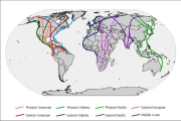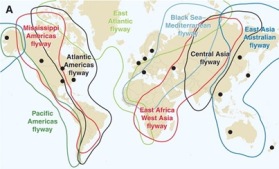I enjoyed a fantastic eye and ear-opening weekend last September working at the Festival of Thrift that took place in and around Kirkleatham Museum between Redcar and Middlesbrough. I was on Artist Liaison duties, and whilst there were several memorable moments, the most moving was seeing Teesside performer and Community Engineer Mike McGrother bring three of his acts together on stage simultaneously. Those acts comprised Infant Hercules, a male voice choir named in honour of the region’s proud industrial heritage, the Haverton Hillbillies, a tribute to McGrother’s grandad and community and McGrother also performed as a solo act, the Wild Rover.

The men, and there were A LOT of them, dressed in flat caps, shirts, neckerchiefs and braces – they looked like extras from Peaky Blinders creating impact and presence before even opening their mouths, but when they did their accents were unmistakably, beautifully Teesside. I say beautifully, because I grew up downwind from Middlesbrough, it was my stomping ground as a teenager, so I’m fond of the Teesside accent and the sharp, frequently cheeky, raw and unreserved quick-wittedness that often accompanies it.
The men performed on a stage sponsored by Wilton-headquartered chemical firm SABIC. Many of the men had walked together to the festival site from Haverton Hill that morning. The men sang soulfully about Teesside’s rich industrial heritage, community and struggle. It was moving, very, very moving.

I felt a bit embarrassed that I’d grown up so near and yet so far from their geography and the subject matter they sang about, but yesterday context started to slip in to place… This weekend marked the first of half term, and my husband and I thought it would be nice to take the children to the seaside. We decided upon Redcar; only we overshot the turning driving up the A19.
“You know, I’ve always wondered what’s at Seal Sands… presumably seals and sands – should we go there instead?” I said.
Well, we found neither seals nor sands but a truly fascinating landscape that was completely alien to us and so intriguing!
Yesterday, on our unexpected day trip, we inadvertently stumbled across medusa-like, epic chemical sites located around the mouth of the River Tees at Wilton, Billingham and Seal Sands. The plants felt like high security ghost towns set amidst a combination of post industrial wastelands, Dutch-looking agricultural land, small pockets of residential communities, amongst them, Haverton Hill. The modest, terraced houses seemed oddly located in the landscape. With next to no apparent amenities to serve them some of the homes were burnt out, some boarded up but many were exceptionally well kept. Hardship and pride were simultaneously evident. I was transported back to the lyrics of an Infant Hercules song about reduced employment, hope, and displaced communities. I remembered tales of industrial air pollution that drove people to relocate from the Tees Estuary to ‘cleaner’ communities close by. I remembered my Granddad telling me that when he moved to North Yorkshire as a lad it was impossible to see Middlesbrough from the North York Moors for the thick smog that hung over it.
My paternal grandparents worked for the Bell family on their rural estate south of Middlesbrough in the North York Moors. My granddad was born in Norfolk but had been orphaned and the church arranged employment for him and his siblings on estates in various parts of the country. Granddad found himself in North Yorkshire, an economic migrant of sorts, I suppose, like many of the Irish communities that moved to Teesside to find work.
The Bell family played a significant role shaping Teesside during the Industrial Revolution. Haverton Hill grew as a residential area in the 1880s when The Bell Brothers set up a salt extraction plant at Saltholme, up the road from the settlement. My heritage, and the heritage of those men on that stage was interlinked after all – we were all part of the same story. I wondered if, on a subconscious level, this was why I had felt so profoundly moved by their voices on the stage that day.
In short, I’ve got to go back to Seal Sands. I’ve got to take my camera and my sketchbook and my very own thinking (flat) cap and breathe it in, all of it. It was remarkable, it was massive; it’s kind of forgotten, kind of erased, it’s pivotal, it was then and it is still very much now.
We did make it to Redcar beach, by the way. And the children had a great time!





















